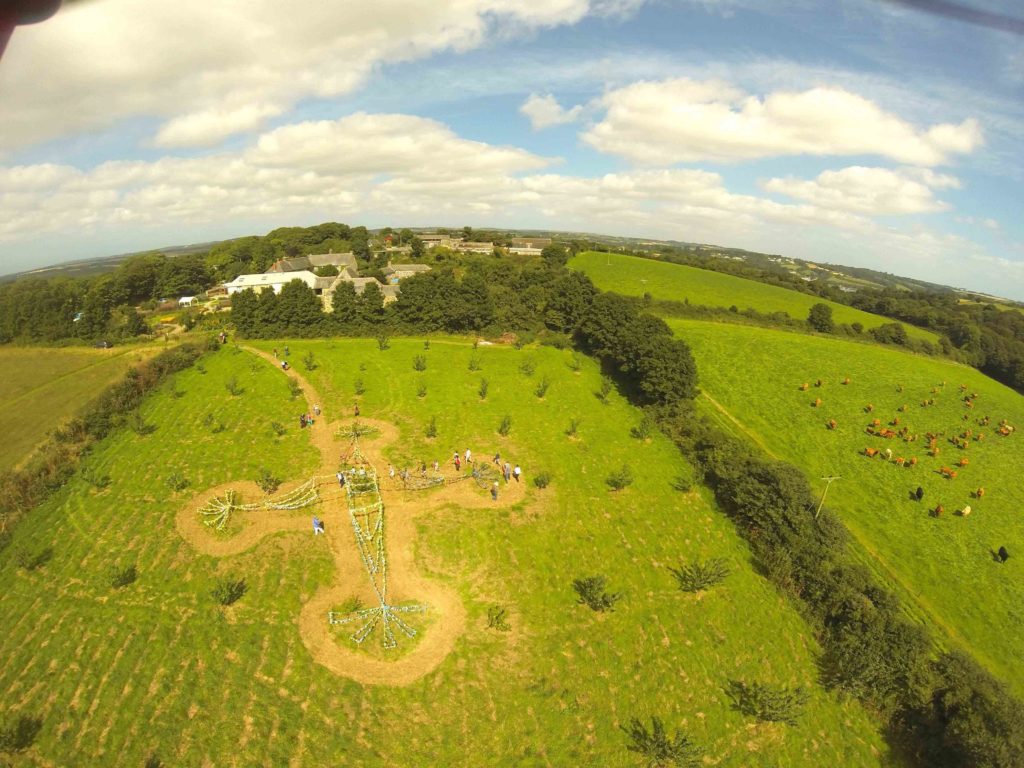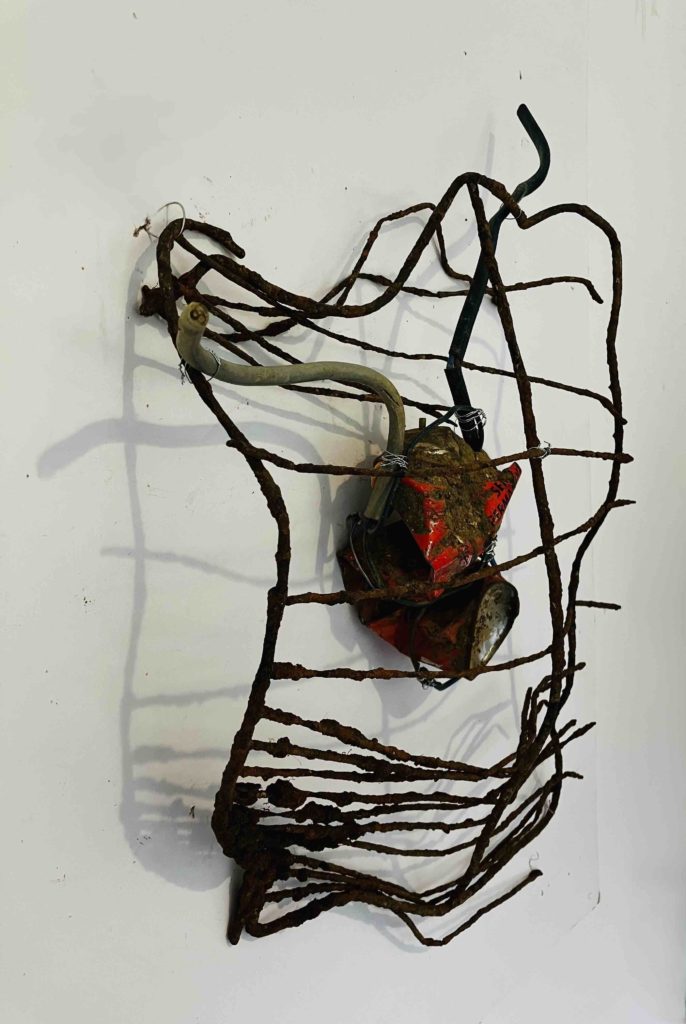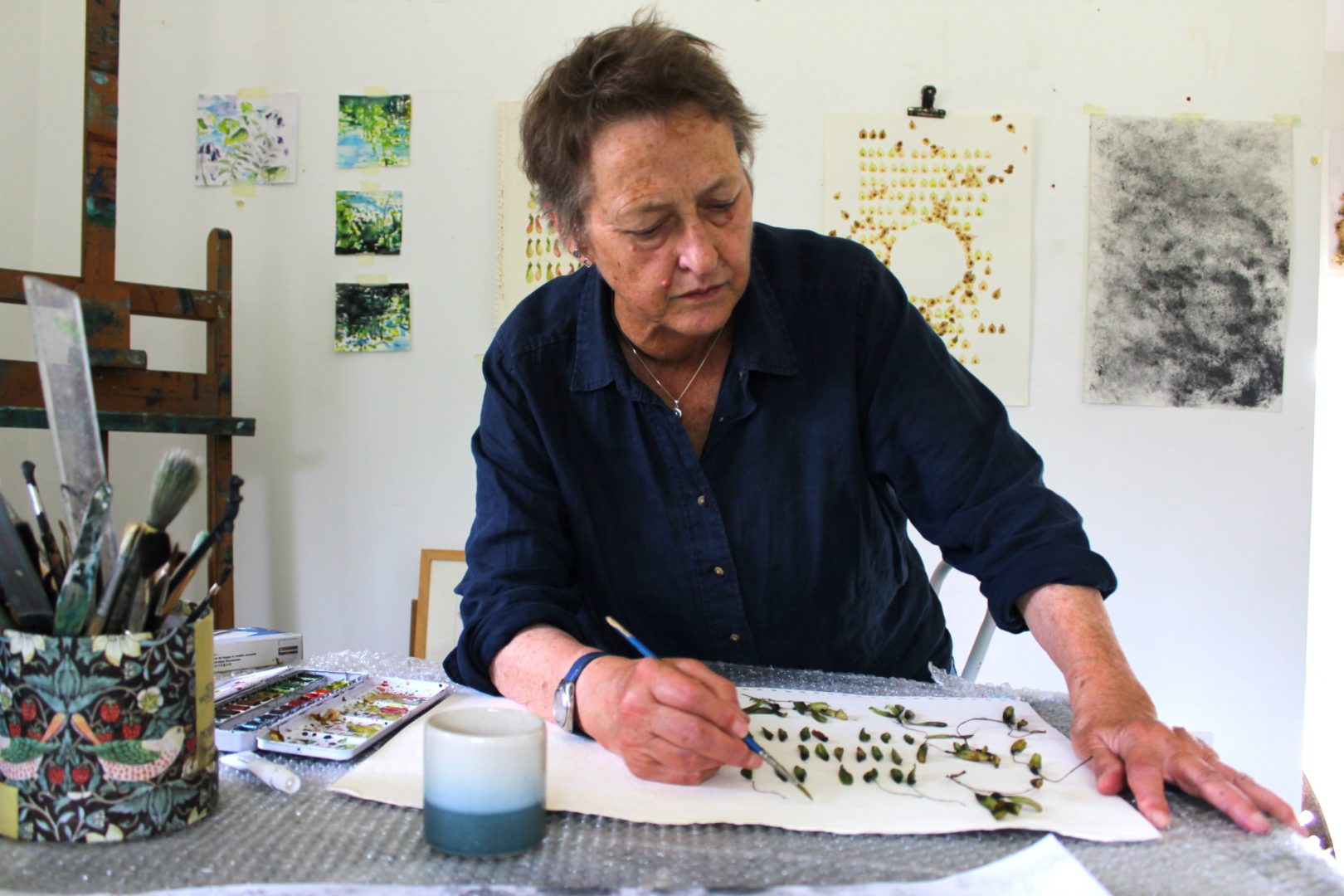Julia Giles talks about her work as being in its broadest sense, about the living landscape and our relationship with it. Julia Giles lives on a farm in Cornwall. There she grew up and worked, before going to Bath Academy of Art. Maybe because Julia grew up on a farm, her artwork has mainly focussed on the elements. She considers our relationship with the land, and the customs, routines and mythologies surrounding that relationship. Along with developing her own explorations, Julia Giles works collaboratively with other artists, writers and musicians.
Our relationship with the living landscape
” My most recent work incorporates items collected on walks across the fields or by the sea – a practice that emerged during the first lockdown. I am interested the customs, routines, stories and mythologies surrounding our relationship with the land and the elements. I use a range of media which include assemblage, found objects, painting, photography, video, and installation. ….
“I am trying to learn more and think actively about sustainability. In the spring of 2024 I was a member of Cornwall Council’s ‘Residents Energy Panel’, one of the consultation groups informing the Cornish Local Area Energy Plan towards attaining net zero carbon emissions by 2050. “

Newlyn Society of Artists
Julia Giles has MAs in Art Psychotherapy (Goldsmiths’ College) and Fine Art (Middlesex University) and worked for 33 years in London schools with children who have Special Educational Needs.
“In 2019 I returned to Cornwall and am currently Chair of the Newlyn Society of Artists – an artists’ group formed in 1895 when Stanhope Forbes founded the ‘Newlyn School.
In the summer 2024, I participated in the Groundwork Residency. I learned a lot and came away with questions about what will survive from our current era into the far future.”

Social tipping point
“At the GroundUp conference in November 2024, conservation scientist Dr Charlie Gardner, explained how artists can contribute to a social tipping point that will enable people to see that the climate emergency is everybody’s problem. He likened a social tipping point to the ‘wierdo dancer’ at a party – first to dance and dancing alone while everybody watches, distancing themselves, until more and more people join in. The Groundwork Network contributes to the social tipping point for change of attitude to our relationship with the environment, and I’d like to be part of it.”
Julia Giles
https://www.artworkjuliagiles.co.uk


